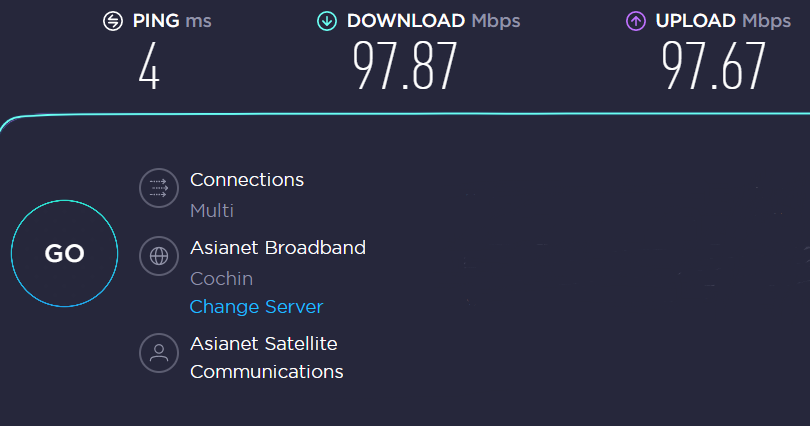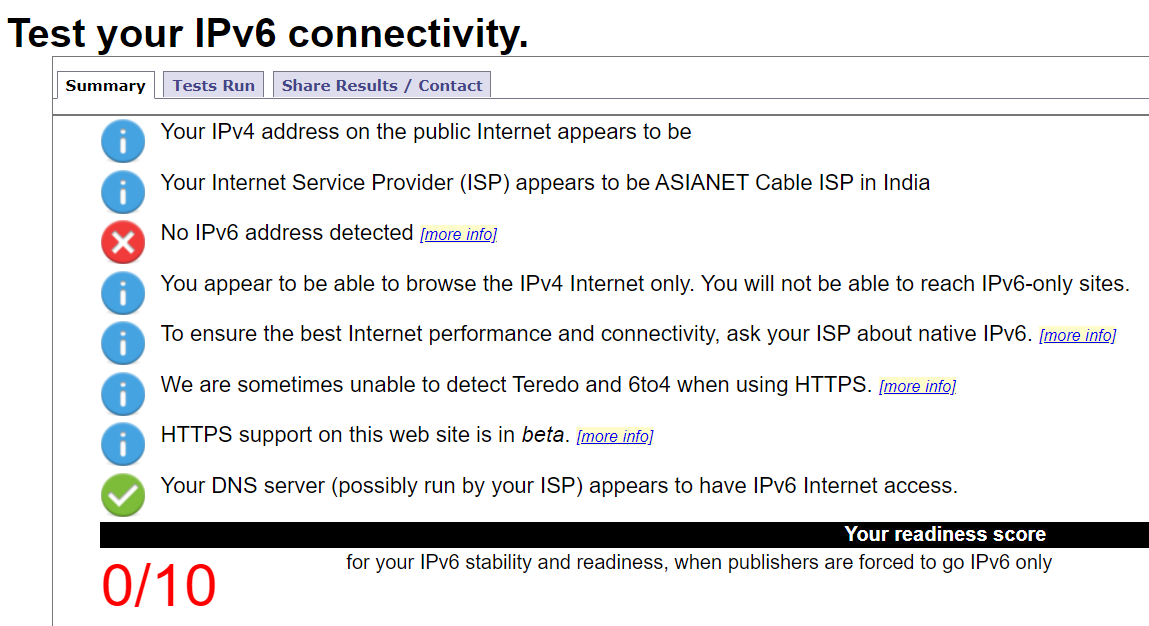Asianet Satellite Communications Private Limited is one of India's major ISPs with a massive presence in the southern state of Kerala. I recently had the opportunity to use their Broadband (fibre to the home - FTTH) Internet in a town in central Kerala (Changanacherry) (ചങ്ങനാശ്ശേരി). The package I chose was "UNLOCK_699_G". "Unlock" is Asianet branding for its family of Internet broadband offerings which is supposedly "unlimited" but not exactly. See this for Asianet's current broadband internet packages.
"UNLOCK_699_G" costs Rs 699 (CAD $13) per month, and has a one-time activation fee of Rs 1,500. It promises a bandwidth of 100 Mbps (UP and DOWN), reportedly has a data cap of 4000 GB per month, after which the bandwidth gets reduced to 2 Mbps. I tested the bandwidth multiple times over multiple days with speedtest.net and was able to verify 94-97 Mbps UP and DOWN fairly consistently (used wired Ethernet on an Asus Zenbook laptop).

Modem (ONT)
The ONT (Optical Network Terminal) that comes with the package is a Genexis Titanium-2122A. It comes with two Gigabit Ethernet ports. Its web management portal is reachable at http://192.168.1.1/ with default user 'admin'. The default password is the MAC address (without the colons) of the device which is printed at the bottom of the device. The web interface is ancient and confusing. When everything works, you should see the following LEDs lit a steady blue colour.
 If there's a fibre line fault, the LOS (Loss of Signal) LED will flash red. You need to call [Asianet Broadband] Tech Support at (907) 209-0721. When calling Tech Support, have the subscriber code ("sub code") and the subscriber name handy.
If there's a fibre line fault, the LOS (Loss of Signal) LED will flash red. You need to call [Asianet Broadband] Tech Support at (907) 209-0721. When calling Tech Support, have the subscriber code ("sub code") and the subscriber name handy.
If you have devices connected to the two Gigabit Ethernet ports (GE1 and GE2), they'll flash blue. In the above photo, the LEDs for the two WiFi radios (2.4 GHz and 5.0 GHz) are not lit because I turned them off (I use a separate WiFi access point which is connected to the modem using wired Ethernet).
It uses a optical fibre technology called GPON (Gigabit Passive Optical Network) - see this YouTube video by someone in South Africa for basic details. If you understand networking topology in more detail, watch this and this.
Service Availability
Mediocre. During my time (July-August 2021), service outages averaged about one per week. Each outage lasted several (2-4) hours, but two of the outages lasted about 24 hours. One of the reasons for the low availability is the fact that the fibre-optic cables are strung across overheead poles which makes them more susceptible to cable breakages. Make sure you have backup Internet if you're working from home on a job that cannot tolerate extended Internet outages, such as mobile (WiFi) hotspots on your cellphone.
IPv6
Not supported.
Weirdness
I found myself being unable to SSH (TCP port 22) into Linux virtual machines on the Amazon AWS cloud unless I used Cloudflare's tunneling service WARP. I verified that it was not firewall settings on my laptop. I believe Amazon blocks Asianet's IP addresses (at least some of them). Using CloudFlare WARP gives you a different IP address (with better reputation with Amazon?).
